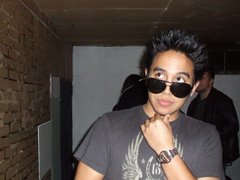Katherine Hayles has a way approaching this new technologically driven era that can’t be denied its role in today’s literature. Her argument stands at, “ the physical form of the literary artifact always affects what the words ( and other semiotic components) mean.” So how do we begin to decipher this argument? Her main components of her arguments lie with hypertexts, cyber texts, and techno texts.
Hypertexts are texts that are very link driven and non-linear. It was interesting to see the encyclopedia as a hyper text because one would quickly draw an assumption that an encyclopedia is too primitive to fit such a category but she dissects the term really well and shows us that literature we see on our computer screens are not the only examples that fit her approach but that literature, more now then ever, is really being put under scrutiny and analyzed a little closer but through different means, call it a different lens if you must.
W.J.T. Mitchell, which she recognizes as a very respected critic, states that literature can go only as far as image and text which he terms at “textimage”. This is where she is quick to respond with her own term of cybertexts. This term acknowledges, as well it should: images, sounds, animation, motion, and not just the text. This is a hard concept to wrap your thoughts around because how can sound, motion and animation have anything to do with literature? Well one of the ways I think she supports this is through the example of “Lexia to Perplexia”. All these other factors are really important in our navigation of literature when we surf the web. Think about the sound your computer makes when you’re trying to do a certain function but it won’t let you until you close the window you were using before. We automatically know what to do and we figure out how to continue and seek whatever literature or information we were seeking. All these features she points out are enveloped in our approach to literature through the technology that we are currently using. This interaction Is playing with her third term of technotexts. Technotext refers to the connection between material properties and its content. It’s made more visible, it’s emphasized and there is more information and demand for interaction instead of just randomly surfing through.
Her literary criticism is very well argued but I still wonder if this breakdown really gives us more clarity on the ever evolving styles of literature and the influence that the "machine" is having on it. "Lexia to Perplexia" just reflected how confusing it was for people who don't use a computer and have no idea how to use one must feel. Soon enough within the next generation that will be a rarity. I praise her approach but I'm not really sure if this criticism has any applicability or awareness.
Subscribe to:
Post Comments (Atom)

2 comments:
One of the things that I found interesting about Hayles argument and your post is that "Lexia to Perplexia" can be considered literature. I don't think I have encountered any "technotexts" before this one, but I agree with you that it was extremely confusing. When I visited the site I didn't think I was looking at/reading a piece of literature, especially since some of the text disappeared or overlapped so that one couldn't even read it.
"'Lexia to Perplexia' just reflected how confusing it was for people who don't use a computer and have no idea how to use one must feel."
True. Though I wonder if it's just not crazy for the sake of being crazy on some level as well.
Post a Comment